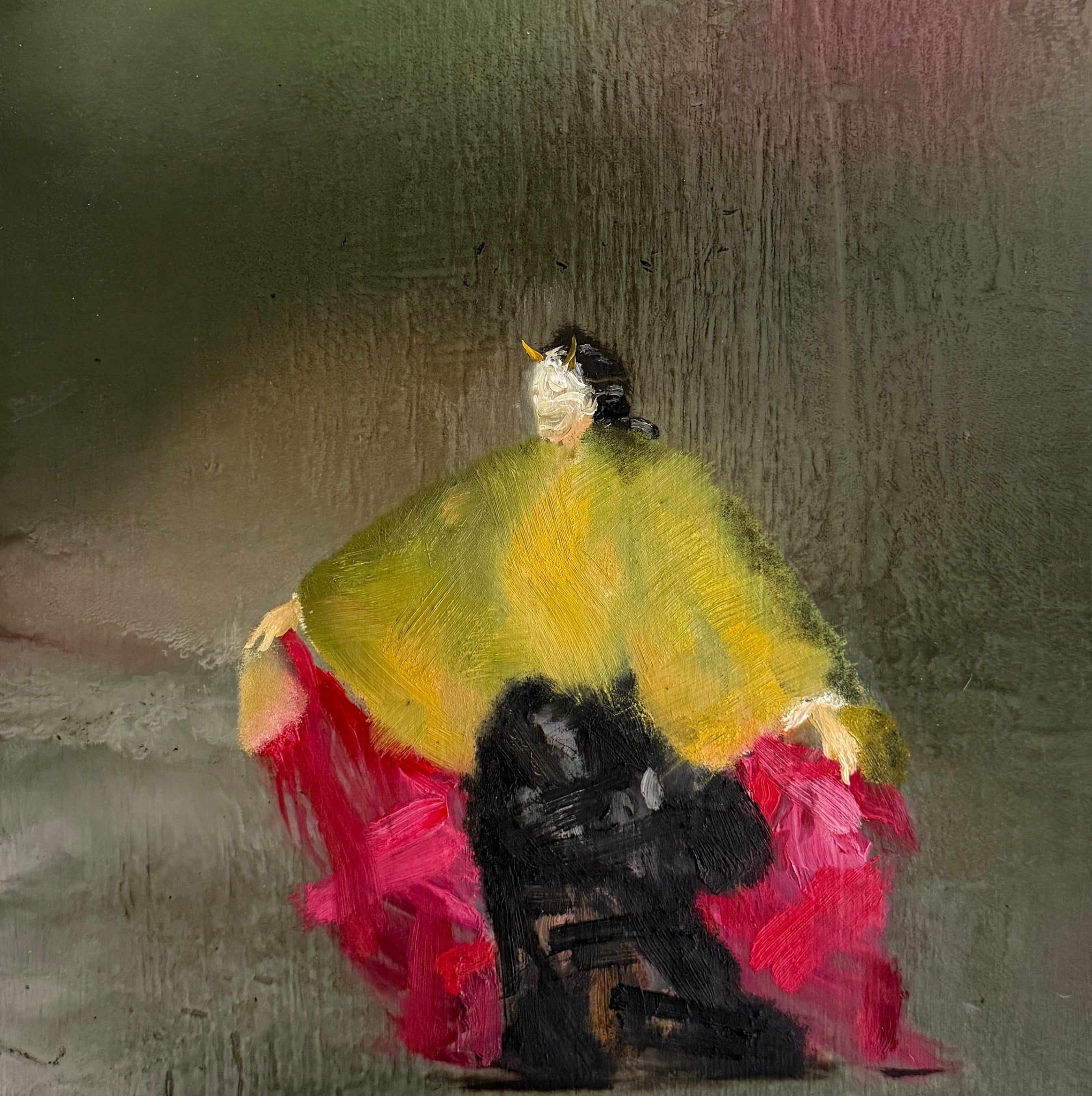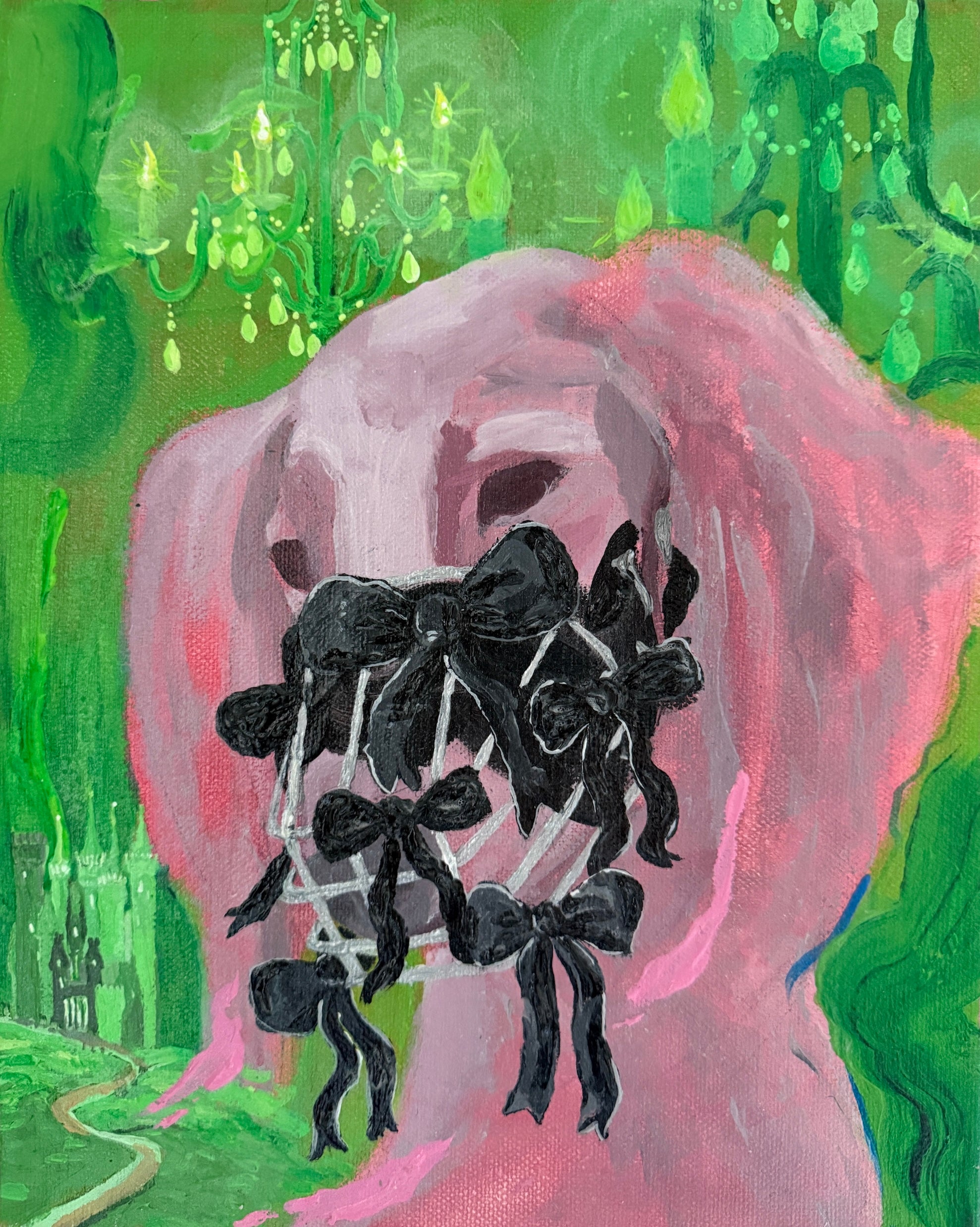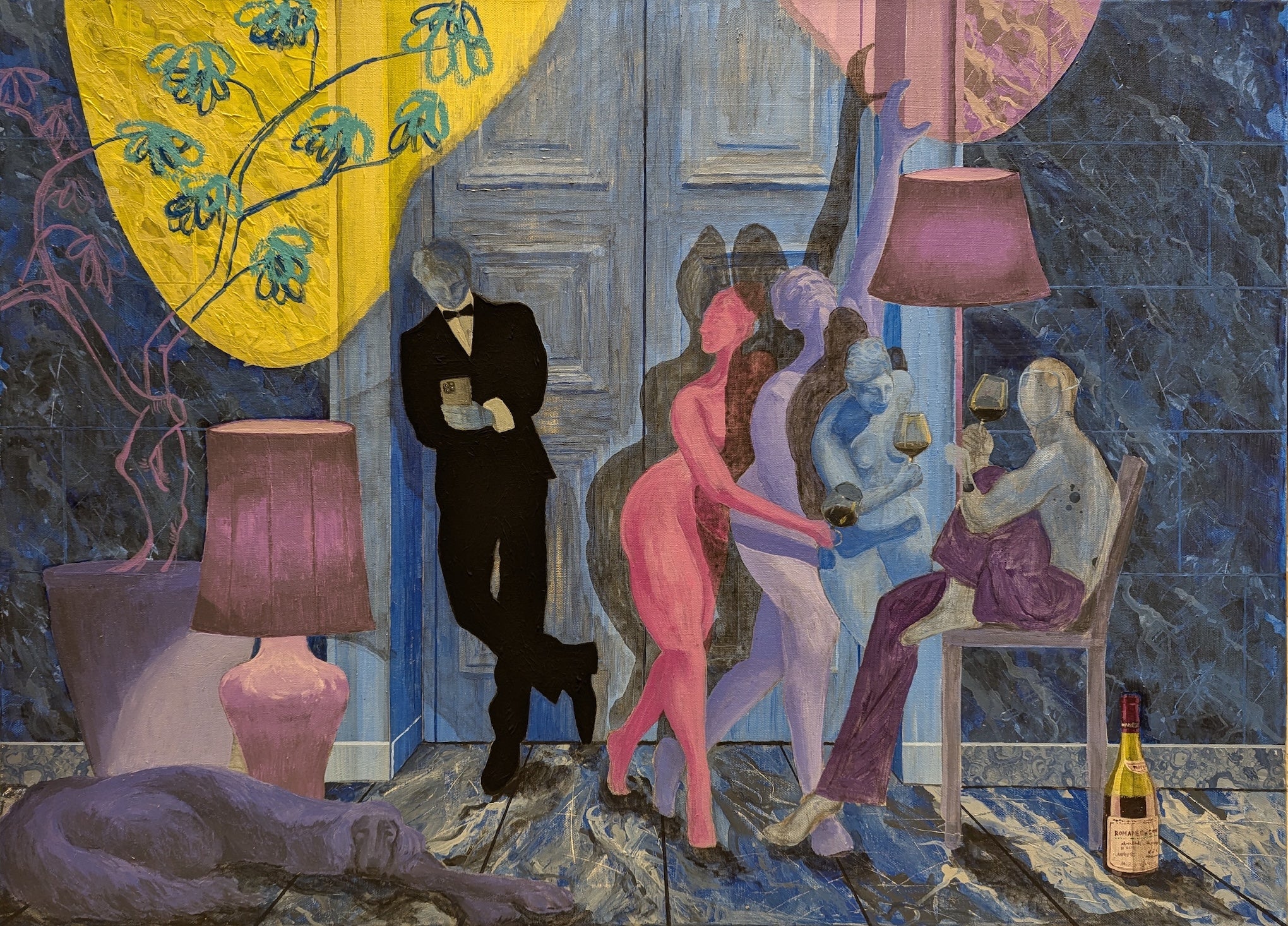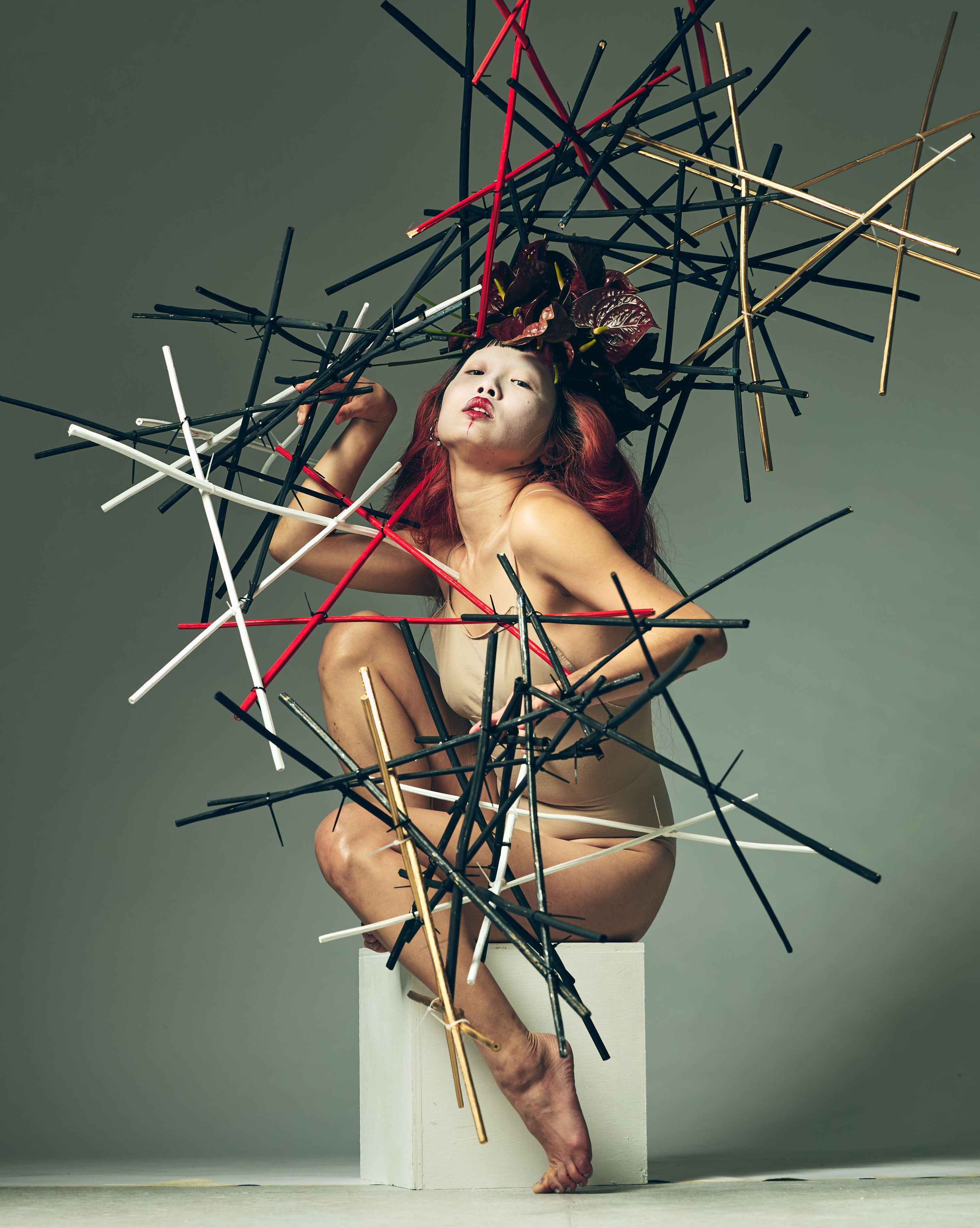YUSUKE KIRIKI
FINE ARTIST
"Muzzled Grace"
Yusuke Kiriki paints not from what he sees, but from what he senses lingering just out of reach--between memory, emotion, and the unspoken. His work drifts between figuration and abstraction, where quiet figures emerge from color fields with a tenderness that resists explanation. Infused with a deep understanding of both beauty and repression, Kiriki's paintings offer a delicate tension: queerness not as a spectacle, but as a condition of being. In a world that often demands clarity, Kiriki's canvases offer something more vital; a space to feel, hesitate, and simply exist.

PROLOGUE
Fine Art in Japan often speaks through restraint, turning repression into its own form of expression. Silence and omission carry as much weight as brushstrokes or pigments, creating tension in what is left unsaid. In these pauses, artists carve space for ambiguity and reflection, revealing a culture where subtlety shapes meaning. What endures is not only the image, but the discipline, the stillness, and the quiet insistence that significance lives between what is shown and what is withheld.
At first, Kirki's work seems gentle, almost subdued. But the longer you look, the subtleties unfold.

To Be Determined (2024)

To Be Determined (2024)

To Be Determined (2024)

Lord Ambiguity (2025)

Falling Awake (2025)

Familiar Strangers (2025)

What The Dark (2025)
“We experience the world through emotion, so I try to create paintings that don’t instruct, but invite.”
Look longer and something deeper begins to take shape. A body watching, hand resting, or a presence refusing to explain itself. Kuriki was first drawn to art not through a textbook or an easel, but in a moment of awe. As a boy, he visited Paris with his grandmother, a Korean woman who had become a Japanese citizen after coming to Japan during the war. She brought him to the Musée d’Orsay. There, surrounded by sculptures, he felt what he describes as a kind of shock.
Stunned by the sculpture's ability to express something beyond language and culture. That experience planted a seed. Years later, it began to bloom. Kuriki came to painting outside the traditional path. He developed his practice independently—through careful study and sustained experimentation. As his work deepened, he was drawn to Surrealism—not just as an art movement, but as a deep-rooted human impulse to express. Years later, it began to bloom. Kuriki came to painting outside the traditional path. He developed his practice independently—through careful study and sustained experimentation. As his work deepened, he was drawn to Surrealism—not just as an art movement, but as a deep-rooted human impulse to express

To Be Determined (2024)

All Dressed Up With No Where To Bark (2024)

To Be Determined (2024)
“I’m interested in that tension, between what is clearly seen and what remains unsettled.”


After Lunch (2024)
What we can’t fully explain or say. His practice is driven by a fascination with the hidden layers of the self—what philosopher Charles Taylor calls our “inner depths… the unsaid, the unsayable, the powerful inchoate feelings” that shape us from within. At key moments in his life, Kuriki has followed those feelings—a kind of leap of faith—and they’ve led him somewhere unexpected. Psychologist Carl Jung might call this realm the “unconscious,” but even today, psychology and science have yet to fully map it. He is about to begin postgraduate study in fine art in London, seeking to expand and deepen his evolving inquiry.
He often paints people, he says, not because he wants to render likeness, but because it is through the human figure that we perceive most of the world—a mystical personification. At the same time, his figures are only half-grounded. They float in color fields, in ambiguity. Their outlines blur, their gestures fold in on themselves. The emotional tone is consistent, but not easily named. Kuriki is clear that his work is not about offering an answer. Instead, he creates a space to linger in what we can’t quite explain. “We experience the world through emotion,” he says. “So I try to create paintings that don’t instruct, but invite—so the viewer can breathe and feel in their own way.”
One of Kuriki’s recent series stages figures inside ambiguous interiors. Lit by spotlights and framed by warped or translucent backdrops, these figures hover between visibility and concealment. Drawn from archetypal sources—a fashion model, a mythic abduction, a noh performer, a queer dancer—they evoke personas we recognize, yet feel distanced from. Their outlines are sharply rendered, but the space around them dissolves. “I’m interested in that tension,” Kuriki says, “between what is clearly seen and what remains unsettled.”

To Be Determined (2024)
“Just to feel something... even if it’s small or even if they don’t know what it is.”

Mutations of Time (2025)

Live Lively, Momentarily (2025)
These scenes explore what it means to be present without being fully known. Kuriki does not shout. He murmurs. Kuriki’s recent works explore the tension between influence and instinct. He is interested in wood, both as a material and a metaphor. In Japan and many other countries, wood has a historical and spiritual significance, symbolizing impermanence and harmony with nature. Its grain is organic and unpredictable—like the inner landscape of the self.
By laying mythological imagery over these surfaces, he explores how human narratives inscribe themselves onto the natural world. Are we disruptive? Or, are we simply another expression of nature? He doesn’t seek resolution. It holds the question open—especially urgent in today’s ecological and psychological climate.
At its core, Kuriki’s work is about presence. Not about identity as a category, but what lies beyond it. He paints with patience, sometimes returning to a canvas after weeks of silence, allowing time to alter the direction. For him, process is everything: time, texture, intuition. It is not perfection he seeks, but resonance.
When asked what he wants viewers to take from his work, he answers simply:
“Just to feel something... even if it’s small or even if they don’t know what it is.”
In that not knowing, in that pause between brushstroke and breath, Yusuke Kuriki gives us something rare: a quiet invitation to feel without explanation.
To see with more than our eyes.
NEXT ARTIST

PHOTOGRAPHER

GAS CHROMATOGRAPHY
KIRIP TRUMAN

GLASS CUTTER













